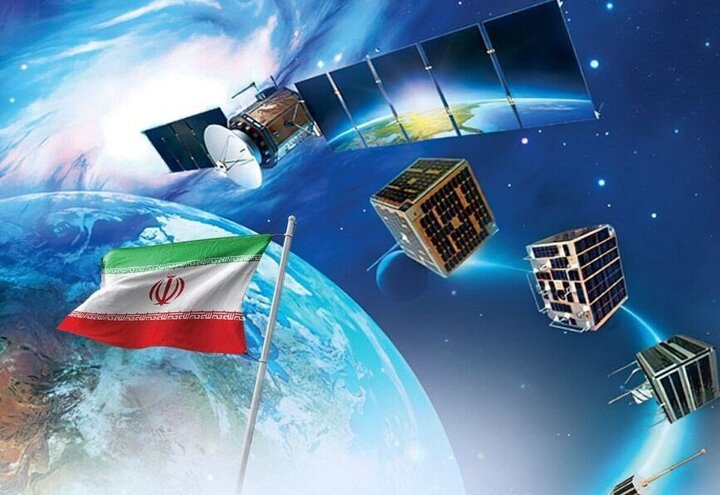Iran (IMNA) - This significant day, which coincides with the 14th of the Bahman month in the Persian Calendar (1402), pays tribute to the momentous achievement of launching Iran's inaugural satellite in February 2009. The satellite, known for its data-processing capabilities and contributions to research and telecommunications, symbolizes Iran's growing authority in the global arena of scientific progress. Despite facing challenges, Iran continues to showcase its unwavering commitment to space technology and its determination to excel on the international stage.
Iran's Omid Satellite Marks Milestone in Indigenous Space Program
In 2009, Iran achieved a significant milestone in its space program with the successful launch of its first homemade satellite, 'Omid' (Hope). The satellite was deployed into a low Earth orbit after being propelled by the Iranian-made carrier rocket, Safir 1. This historic moment coincided with the 30th anniversary of the Islamic Revolution, adding to its significance.
The following day, NASA verified the launch as a success, further validating Iran's entry into the select group of nations possessing indigenous satellite launch capabilities. As a result, the development of various aspects of the space industry and fostering self-reliance in this domain became integral components of the country's general policies.
To commemorate this momentous occasion, experts in the field of space technology convene annually on the anniversary to envision new possibilities and explore the diverse applications of space technology. Iran's Omid satellite launch serves as a testament to the nation's commitment and progress in the realm of space exploration and innovation.
Iran Successfully Launches Three Homegrown Satellites, Moves Closer to Geostationary Orbit
On January 28, 2024, the Islamic Republic of Iran achieved a major milestone in its space program. For the first time, Iran successfully launched three homegrown satellites - Mahda, Keyhan-2, and Hatef-1 - into space orbits. The satellites were placed at altitudes ranging from 450 km to 1,100 km above the Earth's surface, bringing Iran closer to reaching the highly sought-after Geostationary Orbit (GEO), also known as geosynchronous orbit.
Unlike previous launches, which reached altitudes of 400 to 750 km, this recent launch utilized the Simorgh satellite carrier and reached the Earth's elliptical orbit. This significant advancement positions Iran to make further strides towards accessing the Geostationary Transfer Orbit (GTO) and ultimately the GEO, which is approximately 36,000 km above the Earth's surface. Iran's successful launch of these homegrown satellites marks a pivotal moment for the country's space exploration endeavors, showcasing their growing capabilities and ambitions in the field.
Leader of the Islamic Revolution Highlights Iran's Capabilities in Space Technology and Production
In a statement on May 6, 2020, Ayatollah Seyed Ali Khamenei, the Leader of the Islamic Revolution, commended the Islamic Revolutionary Guard Corps (IRGC) for successfully launching the Nour Satellite into space. Emphasizing Iran's capabilities, Ayatollah Khamenei addressed those who doubted the country's potential, stating, "Despite claims that it is impossible, we have proven our competence. With a satellite launch speed of 7,500 m/s and the ability to place it in orbit, along with remarkable advancements in defense industries, we possess the capacity to achieve a surge in production." This declaration showcases Iran's determination to excel in both space technology and industrial output.
Iranian President Emphasizes the Significance of Space Industry's Commercialization for National Strength
On January 5, 2023, Iranian President Ebrahim Raeisi highlighted the critical role played by the space industry as one of the country's key assets and propelling sectors. President Raeisi emphasized that the advancement of the space industry, alongside other industries and sciences, would greatly contribute to enhancing Iran's overall strength.
President Raeisi further stated that space sciences and industries are currently experiencing a rapid economic and commercial expansion on a global scale. He underscored the importance of commercializing this field, emphasizing the need to capitalize on its vast potential for economic growth and development.
Iran's Space Agency Set to Launch 10 Satellites, Unveils State-of-the-Art Biospace Capsule
Iran's Space Agency is preparing for a significant advancement in its satellite program, with plans to launch 10 more satellites. Additionally, the agency has revealed a cutting-edge 1.5-ton biospace capsule, showcasing the nation's impressive progress in biospace technology.
Hossein Daliriyan, spokesperson for the agency, confirmed the imminent launch of these additional satellites and disclosed that further launches are scheduled before the Iranian New Year, which begins on March 21, 2024. Furthermore, the development of a new 1.5-ton capsule is currently underway.
Daliriyan emphasized Iran's self-sufficiency in the space industry, highlighting the country's complete ownership across all three sectors, distinguishing it from other nations with similar capabilities. He proudly mentioned that Iran is among the select group of 12 countries possessing this advanced technology.
Iran Aims to Develop Advanced 1.5-Ton Biospace Capsule with Increased Human-Carrying Capacity
In a bid to surpass the capabilities of its previous biospace capsule, Iran is currently working on the construction of a more advanced 1.5-ton biospace capsule. This ambitious project comes after the successful launch of the Kavos capsule and aims to achieve human-carrying capacity. The upcoming capsule will feature enhanced manual control systems, representing a significant leap forward from previous models.


Your Comment